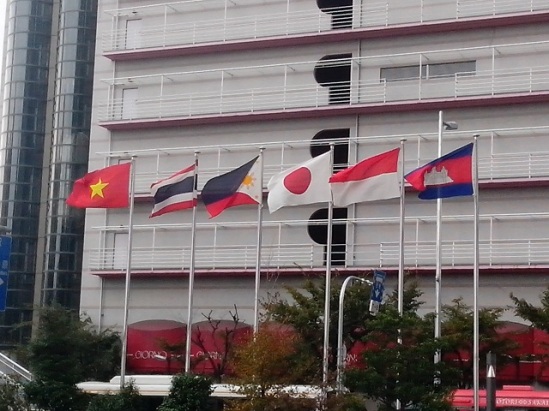DAY ONE: The Arrival
There I was, 37,000 feet above ground on my first international flight, trying to concentrate on Stephen King’s “Full Dark, No Stars” but failing miserably, in fact getting antsier and antsier by the minute, all because I couldn’t get my mind off one thing: chopsticks.
I mean, the dude next to me could be a religious nut with a sinister plot, but all that worried me on that humdrum flight en route to Japan was: How am I going to eat?
So it has come to this, I brooded darkly as we began our nighttime descent to Kansai International Airport. The ghost of countless missed opportunities to learn the damn thing has come to haunt me.
But apprehensions like that tend to vanish in the face of pulchritude. Zooming on a freeway inside a rented bus that was taking us to Sakai City, I marveled at the newness of everything: a highway that was already deserted at 9 p.m., wide sidewalks empty of moving things, a vast carpet of lights that was probably the entire Osaka prefecture flickering under a moonless sky. And as if those were not enough, the crisp autumn air that greeted us when we alighted from the bus drove home the fact that, after 34 years, I am finally a tourist in another country.
At the Hotel Agora Regency, a quick late dinner showed me my in-flight gastronomic concern was unfounded: They have spoon and fork! I hit the sack on that first night thinking, problem solved!
DAY TWO: Everything Zen
The question: Why am I in Sakai?
It was actually more for work than play. Every year, the local government of Sakai, the second largest city in the Osaka prefecture (next to Osaka City), holds the Sakai-ASEAN Week.
Among the activities is inviting journalists from several ASEAN countries (Thailand, Indonesia, Vietnam, Cambodia, Philippines) for a week-long cultural tour of the sprawling port city. I was one of the four Filipino media representatives for this year’s event.
The first of five days’ worth of morning-to-afternoon activities was a visit to a Buddhist temple to witness a Noh play, Noh being a Japanese performance art that’s been around for over 600 years.
At the Takakuraji Buddhist Temple, Noh master Gozo Nagayama lectured us on the art form, complete with a performance and a presentation of masks that according to him were a hundred years old. There was also a black bamboo flute that was and could not be tuned do-re-mi style. When played, it made a shrill one-note sound that is more akin to a dying cry of something subhuman than anything that comes out of a wind instrument.
Equally fascinating was the chubby male performer – the youngest in the group of four, including Nagayama – who donned layers of garments and a mask to resemble a woman. Think Kabuki, only Noh is much older, we were told. In place of a samurai sword, a Noh performer uses a paper fan called ohi, folding and unfolding it in graceful, dramatic gestures.
It was already pushing late afternoon when we left the Takakuraji Temple. After a short briefing of succeeding activities at the hotel, we were back at our respective rooms, sucking in the opulence and abusing the wifi connection, which was thankfully decent.



